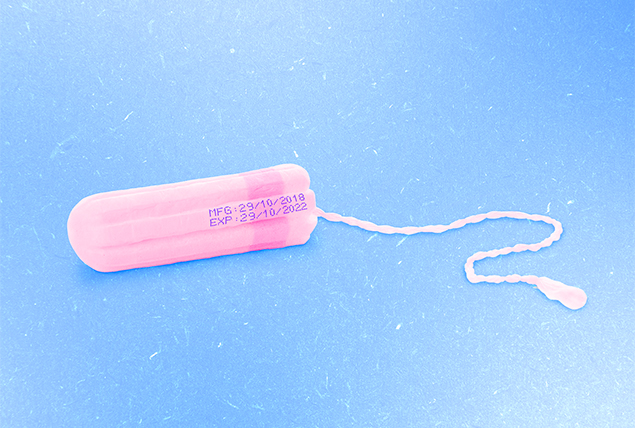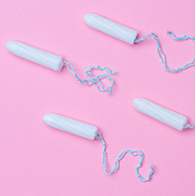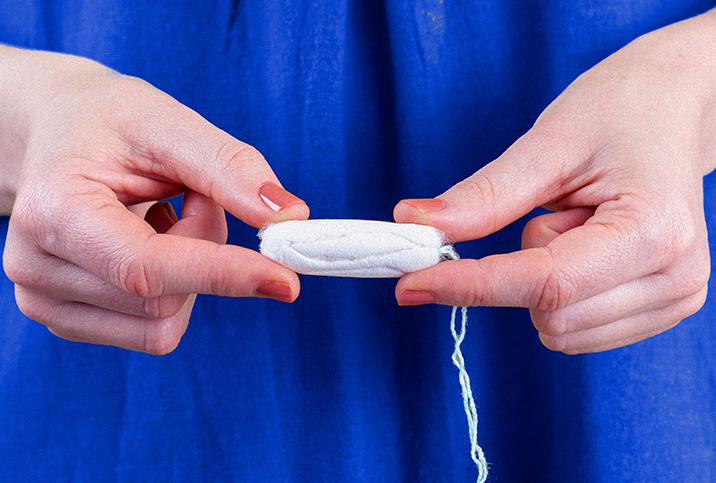Why Do Tampons Have an Expiration Date?

Food and medicine have expiration dates. But tampons? Before you line your bathroom cabinet shelves with boxes of tampons to accommodate every type of menstrual flow, read this first.
How do I know if my tampons are expired?
If you put your feminine hygiene products into a decorative container, don’t throw away that empty box. The expiration date is located on the original packaging. It’s accompanied by another date: the date of production.
All tampons sold in the United States are subject to Food and Drug Administration (FDA) standards to ensure public safety. They are considered medical devices and fall under FDA regulations.
Companies submit testing data to the FDA. They have to show how their product is safe and effective. Their products can’t encourage the growth of harmful bacteria or change the vagina’s natural pH levels.
"The typical life shelf for tampons is five years," said Anna Cabeca, D.O., a Dallas-based OB-GYN, author and host of the podcast The Girlfriend Doctor.
This is because tampons are sanitary products, but they are not sealed or packed as sterile products. Bacteria and mold can enter past the expiration date. Tampons used after this period could result in a bacterial or yeast infection in the vagina (or both), Cabeca added.
What can happen if I use an expired tampon?
If you do accidentally use an expired or unsterile tampon, the best thing to do is take it out immediately, Cabeca said. Otherwise, you could run an increased risk of infection, such as bacterial vaginosis or a yeast infection.
Signs of bacterial vaginosis (BV) can include:
- Fishy vaginal odor (particularly after sex)
- Itchy vulva or vagina
- Burning during urination
- Discharge that is thin, gray, white or green
Signs of a yeast infection can include:
- Itchy and irritated vagina or vulva
- Burning during intercourse or while urinating
- Vulva redness and swelling
- Vaginal pain and soreness
- Vaginal rash
- Thick, white discharge
- Watery discharge
Watch for symptoms over the next few days. Bacterial vaginosis and yeast infections are typically easy to treat. Yeast infections can, however, lead to skin infections or candida arthritis in rare instances.
Old tampons could become a breeding ground for bacteria. If you use expired tampons, you could run the risk of developing toxic shock syndrome (TSS).
"TSS or toxic shock syndrome is a life-threatening condition when bacteria get into your body from toxins which are harmful," said Monte Swarup, M.D., an OB-GYN in Chandler, Arizona, and founder of the Vaginal Health Hub.
TSS is rare—it occurs in 0.8 to 3.4 per 100,000 women in the U.S., according to a study—but it can cause heart, liver or lung failure. A majority of cases of this bacterial infection are due to open wounds, surgery or childbirth.
If anything seems off, speak with your doctor for an accurate diagnosis.
What’s the best way to store tampons?
Tampons are usually made from a mixture of cotton and rayon so they can absorb menstrual blood. They may also absorb moisture from the air. If you store tampons correctly, however, they are less likely to get moldy or become unsterile prior to their expiration date.
"You should store your tampons in a cool area that’s dry. Avoid exposing tampons to moisture for prolonged periods of time," Swarup said. "Mold and bacteria can grow on them if they are not properly stored."
Experts offered the following tips for safely using and storing tampons:
- Wash your hands before insertion.
- Follow the instructions.
- Ensure tampons are positioned correctly.
- Remove your tampon immediately if anything seems "off" or uncomfortable.
- Never wear a tampon for more than eight hours.
- Keep tampons in a box in your bag to prevent damage.
Some people prefer organic tampons. The same storage rules apply—store in a cool, dry place—and the risks of usage are the same.
"It is important to remember that as we get older, we get more prone to vaginal dryness, and tampons can cause small abrasions or cause what we call 'tampon trauma,' which makes you more susceptible to infections," Cabeca said.
Vaginal moisturizer or lubricant can help ease these symptoms. Some people prefer an applicator tampon to help get the correct positioning.
Are there feminine hygiene products without expiration dates?
There are products without specific expiration dates. These products still have best-use recommendations or require replacement with long-time usage.
The sustainable, multi-use alternatives to tampons include:
- Menstrual cups (last for one to two years)
- Period pants (need replacement with wear)
- Reusable pads (need replacement with wear)
Natural menstrual sponges are not recommended as a viable alternative. Generally speaking, these products lack sterility and may breed bacteria.
"[Menstrual cups] can be messy, may be hard to insert or remove, may be tough to find the right fit, may cause an allergic reaction and may cause vaginal irritation," Swarup said, adding they also need to be cleaned between uses to remove bacteria.
It all comes down to personal preferences, he explained. Pads can be a good option since they are very easy to use.
The bottom line
While it’s easy to see a tampon grow mold, bacteria are invisible. Storing boxes in damp conditions or for too long could lead to life-threatening infections. If you have concerns about your bodily health, speak to your healthcare professional.




















